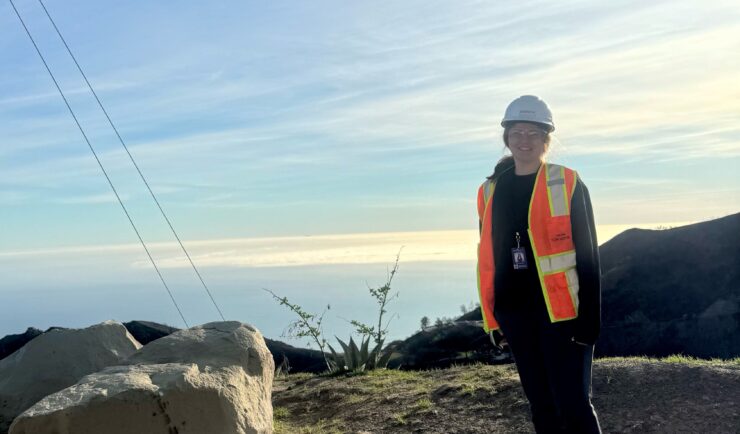- Community Spotlight
- Environmental Resource Assessment & Management
Studying Corals for Future Protection and Restoration

Coral reefs are under threat from warming waters, disease, degraded water quality, and other stressors. Several shallow water coral species are listed as threatened under the Endangered Species Act. Our team of coral scientists on contract with NOAA’s National Centers for Coastal Ocean Science are studying coral reproduction, and genetics, and the environmental factors that affect growth of critical coral colonies. Our employee owners work closely with NOAA federal principle investigators to design and execute experiments, collect and analyze data, and publish reports that aid future studies and inform management decisions for future protection and restoration efforts. Explore the research our staff conduct in an effort to protect coral reefs.
Reproduction
Our coral scientists are part of a team that collected gamete bundles (eggs and sperm) released in the wild during the annual coral spawning event in the Florida Keys. Following this collection the team conducted various reproduction experiments looking at how different toxins introduced into the environment affect reproduction. In addition, CSS scientists are studying reproductive compatibility at the molecular level. For example, they are exploring the role DNA plays in fertilization success. After using many of the gametes and embryos for different experiments on coral reproduction, our team transported some of the larvae to NOAA’s Hollings Marine Lab in Charleston, South Carolina where they were successfully able to grow the larvae into colonies. The scientists will continue to rear these colonies for continued research.
Regeneration
Since coral communities live in the open ocean with waves, currents, storms, and tropical cyclones, they often endure harsh conditions that damage their tissue. Our scientists are investigating the corals’ ability to regenerate tissue and heal wounds under various stressors, including chronic turbidity. Our team prepares samples of coral, trimming fragments to precisely the same size to ensure the experiment is consistent and to minimize the unintended differences between the test fragments. Over the course of three months, the team closely monitors the fragments daily, measuring skeleton deposition and wound healing ability. Each week, the team measures the buoyant weight of the corals, which they will use to calculate skeletal growth of the coral over the course of the experiment.
The team conducts additional observations using macro- and microscopes to capture images and get a closer look at the tissue damage of coral fragments and their ability to regenerate. For this portion of the experiment, the team prepares fragment samples in a fixative so their cells and tissues can be examined under a microscope. These experiments will help determine how turbidity over time affects corals.




See More CSS Insights
CSS Awarded Five Year Subcontract Supporting the Bureau of Engraving and Printing
For over 22 years, CSS has supported the Bureau of Engraving and Printing (BEP). Originally as a prime contractor, CSS began supporting BEP in 2002. In November 2024, a new prime contractor, Koniag, signed CSS as a major subcontractor, which enabled CSS employee owners to continue providing comprehensive environmental, occupational safety and industrial hygiene support…

Supporting Response Efforts Following California Fires
Following the fires that devastated Los Angeles, California and surrounding areas in January 2025, CSS employee owners were deployed to the area as a subcontractor to Weston Solutions, Inc. to assist with the response. This effort supports U.S. Environmental Protection Agency (EPA) Region 9 Superfund Technical Assessment & Response Team (START) program. Initially, a CSS…

1000 Samples of Lake Water Collected and Processed
Congrats to our team supporting U.S. Environmental Protection Agency’s Office of Research and Development for completing the processing and initial chemical analyses of 1000 lake water samples! They received lake water samples from across the continental U.S. this past summer and have completed the initial chemical analyses as part of the U.S. EPA 2022 National…
